Are you confused about whether to choose preschool or pre-K for your child? Wondering if there is even a real difference between the two? Concerned that making the wrong choice could impact your child’s readiness for kindergarten and future learning? You’re not alone—many parents, educators, and even kindergarten investors find this decision more complex than it seems.
The truth is, understanding the difference between preschool vs pre k is crucial for making informed decisions about early education. These two programs serve distinct purposes in a child’s developmental journey. Preschool emphasizes social development and foundational skills through play, while pre-K focuses more on academic preparation and school readiness. Knowing which program aligns with your child’s needs can significantly influence their confidence and capability when they enter kindergarten.
That’s why in this comprehensive guide, I’ll break down the real differences between preschool vs pre k—from curriculum and teacher qualifications to age group, learning outcomes, and beyond. Let’s help you choose smarter and start stronger.
Early Childhood Defined: What Do Preschool and Pre-K Really Mean?
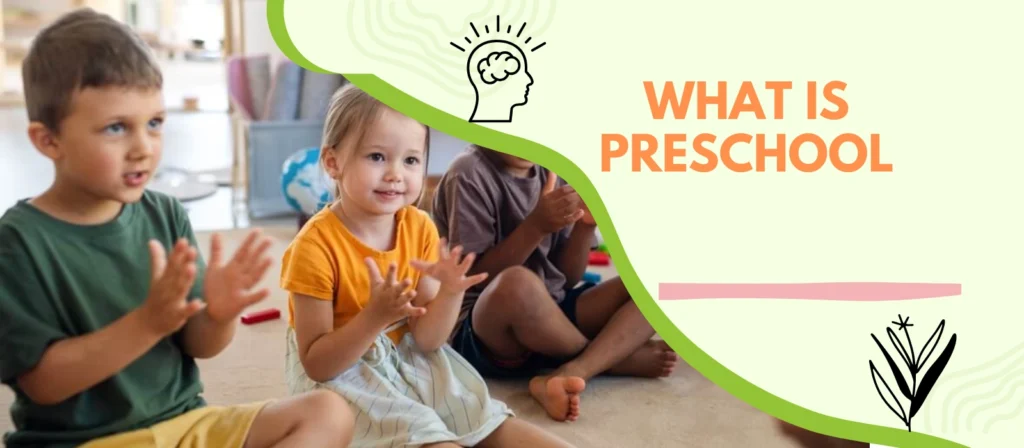
🔹What is Preschool?
Preschool is an early education program designed for children typically between ages 2.5 and 4, with a primary focus on social, emotional, and basic cognitive development. It serves as many children’s first structured educational experience outside the home. The learning environment in preschool is generally informal, built around play-based activities that promote creativity, cooperation, and communication.
Preschool classrooms are often filled with building blocks, art supplies, storybooks, and interactive toys. Teachers facilitate learning by encouraging group activities, sensory play, storytelling, music, and outdoor time. This approach builds soft skills such as sharing, listening, and following directions—essential for navigating group settings like kindergarten.
Preschool does not typically follow a standardized academic curriculum. Instead, it focuses on helping children become comfortable in a group setting, manage emotions, build fine and gross motor skills, and recognize letters, shapes, and colors. These early experiences form the foundation for more structured academic instruction later in pre-K and kindergarten.
Preschool may be offered by private schools, religious institutions, daycare centers, and community organizations. Some programs are half-day, while others may be full-day. Flexibility is a major advantage of preschool, especially for working families who need child care that also offers developmental value.
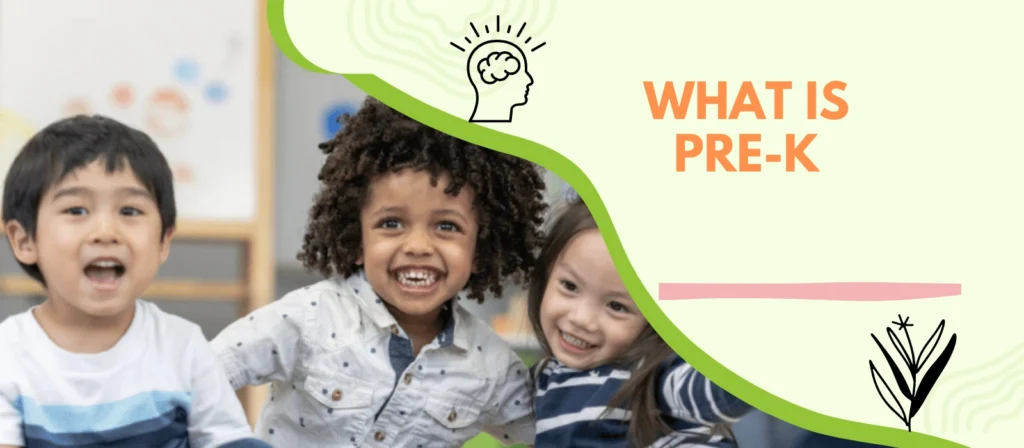
🔹What is Pre-K?
Pre-K, short for pre-kindergarten, is an educational program aimed at children aged 4 to 5 who will be entering kindergarten the following year. Unlike preschool, pre-K places more emphasis on academic readiness, blending structured learning with developmental activities to ensure children are equipped for formal schooling.
Pre-K programs often follow a curriculum that includes early literacy, basic math concepts, problem-solving, and science exploration. Teachers guide children through structured routines that introduce them to classroom expectations, such as raising hands, waiting their turn, and completing multi-step tasks. These elements prepare students for the more rigorous and formal environment of kindergarten.
Pre-K can be part of a public school system or a private institution, and many states in the U.S. offer state-funded pre-K programs as part of broader early education initiatives. These programs often require teachers to hold early childhood education credentials and follow a curriculum aligned with state educational standards.
Pre-K represents a more intentional step in a child’s educational journey. It helps bridge the gap between the informal learning of preschool and the structured environment of kindergarten, focusing on school readiness, independence, and confidence-building.
🔹The Growth of Public Pre-K Programs in the U.S.
In the past decade, public Pre-K programs in the United States have experienced rapid expansion. States like California, New York, Colorado, and Georgia have heavily invested in early childhood education, making Pre-K more accessible and affordable for families. These programs are often funded by state or municipal governments and aim to close the learning gap before children enter kindergarten.
This trend means that schools and educational investors increasingly require high-quality, durable, and regulation-compliant furniture to outfit their classrooms. At XIHA Furniture, we recognize this shift and offer tailored solutions that meet the specific design and functionality needs of modern Pre-K classrooms. Our experience working with global buyers ensures we understand procurement standards, safety certifications, and budget constraints.
Preschool vs Pre-K: A Comprehensive Comparison
The terms “preschool” and “pre-K” are often used interchangeably, but they aren’t the same. While both are part of early childhood education, their objectives, teaching strategies, and intended outcomes differ. Understanding these distinctions can empower you—whether you’re a parent, educator, or kindergarten investor—to make decisions that better suit your goals and the children in your care.
🔹 Age Groups and Enrollment Eligibility
Preschool typically serves children aged 2.5 to 4 years, while pre-K is designed for children aged 4 to 5, right before they enter kindergarten. Preschool can begin earlier and may include more flexibility in entry points, whereas pre-K is more structured in terms of age and curriculum objectives. In many states, pre-K programs are publicly funded or part of school districts, while preschool is often private or operated by child care centers.
🔹 Learning Approach and Curriculum Focus
Preschool uses a play-based approach to support emotional, physical, and social development. It emphasizes curiosity, peer interaction, and foundational skills like colors, numbers, and letters. Pre-K, on the other hand, introduces more structured learning. Children begin to work on early literacy, math concepts, and group-based learning routines that mimic those found in kindergarten classrooms.
Preschool vs pre k programs differ significantly in how they balance free play and guided instruction. Preschool may spend more time on sensory and motor development, while pre-K begins to focus on classroom behaviors like raising hands, group participation, and following multi-step instructions.
🔹 Program Structure and Time Commitment
Preschool programs can range from two to five days per week and are often half-day. Pre-K programs are more likely to follow a full-day, school-like schedule, which prepares children for the demands of kindergarten.
🔹 Institutional Settings
Preschool is commonly offered in child care centers, private schools, and religious institutions. Pre-K is increasingly available through public school systems or state-funded early education initiatives.
🔹 Parent and Policy Expectations
Parents often view preschool as an introduction to group learning, while pre-K is viewed as a crucial stepping stone to kindergarten. Many education policies now include benchmarks for school readiness that pre-K programs are expected to meet, which may not be a requirement in preschool.
To sum up: the difference between preschool vs pre k goes beyond age—it’s about readiness, expectations, and educational philosophy. Understanding these distinctions is key to choosing the best learning path for your child.
Preschool vs Pre-K: Side-by-Side Comparison Table
| Feature | Preschool | Pre-K |
|---|---|---|
| Typical Age Range | 2.5 to 4 years old | 4 to 5 years old |
| Primary Focus | Social-emotional and motor development | Academic readiness and school behaviors |
| Learning Style | Play-based, exploratory | Structured, preparatory |
| Curriculum Type | Informal and flexible | Standards-aligned, school-like structure |
| Program Length | Often half-day, 2–5 days/week | Often full-day, 5 days/week |
| Institution Type | Private centers, daycare, religious orgs | Public or private schools, state-funded |
| Teacher Qualifications | Varies by program | Often certified in early childhood |
| Goal | Adjusting to group setting, soft skills | Getting ready for kindergarten structure |
Why Pre-K Matters in Today’s Education System
Over the past decade, the importance of early childhood education has taken center stage in national policy discussions. Among the various programs under the spotlight, pre-K has gained the most traction—becoming a critical phase in preparing children for formal schooling. But why is pre-K increasingly prioritized over preschool in public funding and strategic initiatives? And what does this mean for families choosing between preschool vs pre k?
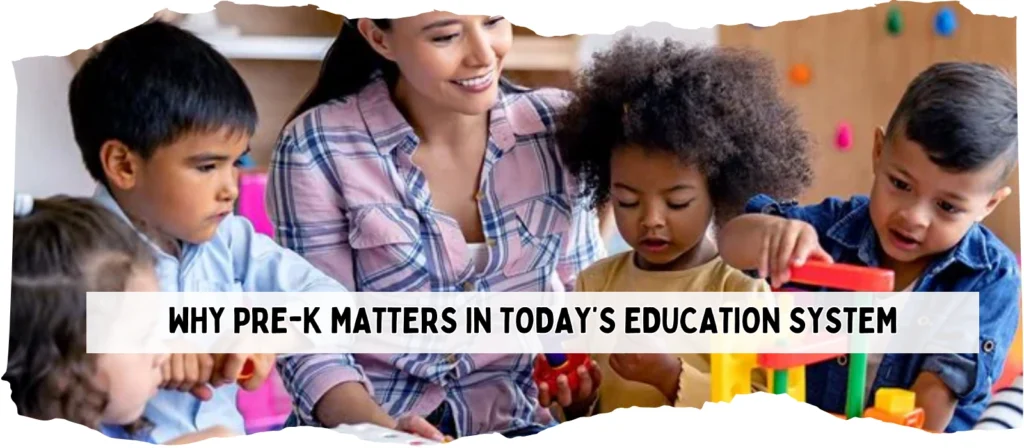
🔹 Pre-K and the Push for School Readiness
In most developed education systems, kindergarten is no longer a gentle introduction to school—it’s now a high-expectation environment with benchmarks in reading, math, and social skills. Pre-K programs have evolved in response, aiming to equip children not only with knowledge but also with the behavioral and cognitive tools required for success in structured academic settings.
Unlike preschool, which focuses heavily on play-based learning and social exposure, pre-K intentionally blends foundational academics with classroom routines. Children in pre-K are taught how to follow instructions, participate in group activities, and complete multi-step tasks—all of which are essential for succeeding in kindergarten and beyond. The difference between preschool vs pre k lies not just in content, but in the strategic objectives: pre-K is designed with a stronger emphasis on measurable outcomes.
🔹 Public Policy and Universal Pre-K Initiatives
Many states in the U.S. and countries in Europe have adopted universal pre-K policies, offering publicly funded programs to ensure all 4-year-olds are kindergarten-ready. According to the National Institute for Early Education Research (NIEER), pre-K participation is correlated with higher reading and math scores in later grades.
These policies often require pre-K programs to be led by certified early childhood educators and follow state-approved curricula. By contrast, preschools—especially private or faith-based ones—may not be held to the same educational standards. This discrepancy is one of the key differences between preschool vs pre k, especially when quality assurance is a top concern for families and institutional investors.
🔹 Pre-K as an Investment in Human Capital
Numerous studies, including those from The Brookings Institution, show that children who attend high-quality pre-K programs are more likely to graduate high school, attend college, and earn higher incomes. Governments recognize this return on investment and are thus more inclined to support pre-K over preschool when allocating early education budgets.
For educators and procurement decision-makers, this elevates the significance of investing in environments that meet pre-K standards—ranging from teaching staff to classroom design. The preschool vs pre k debate, therefore, has shifted from a simple parental choice to a matter of public priority.
🔹 Impact on Kindergarten Preparedness
A child who completes a pre-K program typically enters kindergarten with a stronger grasp of early literacy, math readiness, and classroom discipline. Teachers report fewer behavioral issues and faster academic adjustment among children who’ve gone through pre-K versus preschool alone.
If your goal is to provide a child with the best possible foundation for school success, understanding the difference between preschool vs pre k is essential. Pre-K isn’t just another year in daycare—it’s a targeted, intentional bridge into formal education.
Whether you’re a parent, educator, or investor planning an early childhood program, aligning your approach with the specific goals of pre-K versus preschool can make all the difference in long-term outcomes.
Source: Harvard Center on the Developing Child
Choosing Between Preschool and Pre-K: What Parents Should Know
Selecting between preschool vs pre k can feel overwhelming for many parents, especially when each child has unique needs and learning styles. But understanding your priorities—be it emotional development, social confidence, or academic preparation—can help you make a more strategic decision that supports your child’s long-term success.
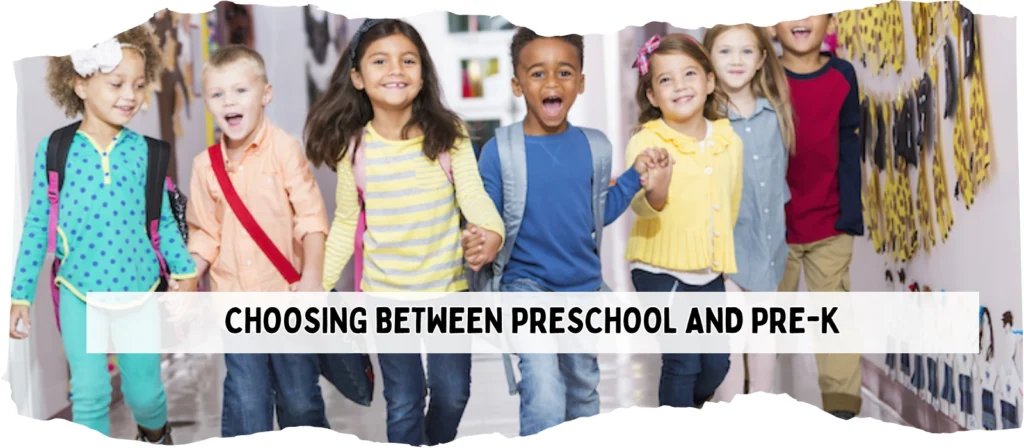
🔹 Consider Your Child’s Development Stage
The preschool vs pre k choice should be based primarily on your child’s age and developmental readiness. For younger children (ages 2.5–4), preschool offers a nurturing, flexible environment where they can explore, socialize, and get accustomed to group settings. If your child is closer to age 4 or 5, and already demonstrating interest in letters, numbers, or independent tasks, then pre-K may be a better fit.
Many families mistakenly view preschool vs pre-K as interchangeable, but the learning outcomes are not the same. Preschool builds a soft foundation through free play and guided discovery. Pre-K is more academically focused, reinforcing skills like phonics, number sense, and routine following—all crucial for kindergarten success.
🔹 Look at Classroom Structure and Curriculum Style
Another big difference between preschool and pre k lies in the classroom environment. Preschool classrooms tend to be more relaxed, with learning centers and open play. Pre-K classrooms introduce a daily schedule that mimics kindergarten, complete with circle time, group instruction, and rotating stations. When comparing preschool vs pre k, always ask about the curriculum style: is it project-based, academic-focused, or Montessori-inspired?
Ask to observe both a preschool and a pre-K class if possible. Seeing the difference between preschool and pre k in action can help clarify what’s best for your child.
🔹 Teacher Credentials and Program Accreditation
Not all programs are created equal. In general, pre-K teachers are more likely to hold formal certifications in early childhood education. Many preschool programs also have qualified staff, but the licensing requirements are often less stringent. For parents weighing preschool vs pre k, reviewing a school’s credentials, teaching philosophy, and safety standards can make a big difference.
Use this checklist when evaluating preschool vs pre k:
- Is the program licensed or accredited?
- What are the lead teachers’ qualifications?
- Are class sizes appropriate for the age group?
- Does the program include readiness assessments?
- How is student progress monitored and communicated?
🔹 Cost, Schedule, and Location
Practical concerns like tuition, location, and class times also play a role in the preschool vs pre k decision. Pre-K programs that are publicly funded may be more affordable, while private preschools often come with more flexible scheduling but higher costs. Consider your family’s daily routine, commute, and childcare needs when making a final decision.
Finally, trust your instincts. You know your child better than anyone. Choosing between preschool vs pre k isn’t about finding the “perfect” answer—it’s about selecting the program that best meets your child’s current needs and prepares them for what lies ahead.
Building School Readiness: Which Program Better Prepares Your Child?
One of the biggest considerations in the preschool vs pre k conversation is how well each program prepares children for kindergarten. School readiness is not just about academic skills; it also includes emotional maturity, social confidence, motor development, and the ability to follow instructions. When comparing preschool and pre k in terms of readiness, both offer important benefits—but they do so in different ways.
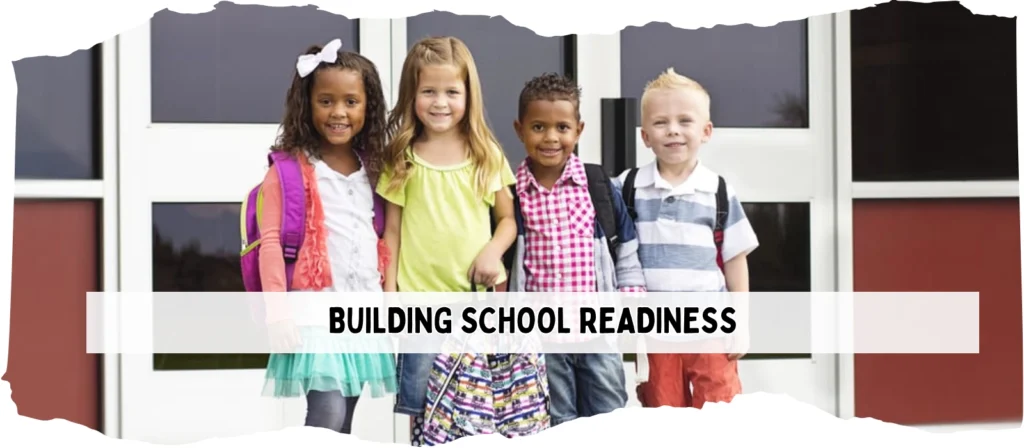
🔹 Academic Readiness
Pre-K is specifically designed to bridge the gap between informal learning and formal schooling. Children in pre-K typically engage in early literacy activities like phonemic awareness, alphabet recognition, and story sequencing. Math concepts such as counting, number recognition, and patterns are also introduced. This academic preparation aligns closely with kindergarten curricula, giving pre-K students a head start.
Preschool introduces these topics in a softer, less structured format. Children may learn shapes, colors, basic numbers, and letters through songs and play. This indirect exposure builds familiarity without pressure, making preschool a great introduction to learning but not always sufficient for full readiness.
🔹 Emotional and Social Development
While both preschool and pre k support social development, preschool places a heavier emphasis on interpersonal interaction. Children learn how to share, take turns, express emotions, and resolve conflicts—all in a safe, nurturing environment. Pre-K continues this work but adds in structure and routine, helping children adjust to following rules and managing transitions.
Social-emotional growth is a key part of readiness, and in this respect, both preschool vs pre k contribute significantly, though in different formats. Preschool lays the groundwork; pre-K reinforces and elevates it.
🔹 Self-Help and Executive Function
Pre-K is more likely to introduce tasks that build independence and executive functioning. These include putting away materials, following a schedule, and completing multi-step directions. These skills are critical for navigating a kindergarten classroom where individual accountability becomes more important.
Preschool, while fostering basic independence like washing hands or tidying up, tends to rely more on adult assistance. In the preschool vs pre k readiness spectrum, pre-K takes the lead in developing the habits and behaviors that align with kindergarten expectations.
🔹 Readiness Benchmarks and Evaluation
Many pre-K programs assess school readiness through structured observations or developmental checklists. These tools help educators and parents identify strengths and areas for improvement before entering kindergarten. Preschool may use more informal assessments, focusing on daily progress and behavior rather than academic metrics.
In short, both preschool and pre k play a role in building school readiness. But if your priority is ensuring that your child walks into kindergarten equipped to succeed academically and behaviorally, then pre-K offers a more focused, preparatory experience.
Qualifications That Matter: Who’s Teaching in Preschool and Pre-K?
When evaluating preschool vs pre k, one of the most overlooked but critical aspects is the qualifications of the educators leading the classroom. The credentials, training, and professional development of teachers directly impact the quality of early learning experiences, yet this factor often receives less attention during program selection.
🔹 Preschool Educator Requirements
Preschool teacher qualifications can vary widely depending on the country, region, or even specific institution. In many private preschool settings, teachers may only be required to have a high school diploma and a certificate in early childhood education (ECE). Some programs accept staff with Child Development Associate (CDA) credentials or similar training.
While many preschool teachers are deeply passionate and experienced in working with young children, the lack of standardized credentialing can lead to significant disparities in educational quality. When choosing between preschool vs pre k, parents and school operators should consider whether a preschool teacher has training in classroom management, developmental psychology, and safety practices.
🔹 Pre-K Educator Requirements
Pre-K teachers are generally held to higher certification standards, especially in public or state-funded programs. Most states in the U.S., for example, require pre-K educators to possess a bachelor’s degree in early childhood education or a related field. They may also be licensed or certified by state education departments.
The focus of pre-K on school readiness means its educators must be proficient in delivering structured academic content, assessing student development, and managing group dynamics. Many pre-K programs also provide regular professional development to ensure teachers stay updated on best practices.
This is a core difference between preschool vs pre k: pre-K educators tend to receive more rigorous training, particularly in curriculum implementation, literacy and numeracy instruction, and early intervention strategies.
🔹 Impact on Learning Outcomes
Research consistently shows that well-qualified early childhood educators have a measurable impact on children’s cognitive and social-emotional outcomes. In the preschool vs pre k comparison, the level of teacher training can mean the difference between a program that merely entertains and one that truly prepares.
For example, pre-K teachers are more likely to use formative assessments and intentional teaching strategies. Preschool educators may offer more unstructured or child-led activities. While both approaches have value, understanding how teaching quality varies is essential for anyone comparing preschool vs pre k.
🔹 What to Look For in Either Setting
When visiting a preschool or pre-K program, ask these teacher-focused questions:
- What is the lead teacher’s education background?
- Is ongoing professional development provided?
- Are teachers trained in child safety, first aid, and behavioral guidance?
- What tools or assessments are used to track progress?
Ultimately, strong teacher qualifications are one of the clearest indicators of overall program quality. Whether you’re leaning toward preschool or pre k, ensure that the adults guiding your child’s early education are trained, supported, and committed to developmental excellence.
From Tradition to Innovation: The History Behind Preschool and Pre-K
Understanding the evolution of preschool vs pre k helps us see why these two educational stages have developed such distinct goals and identities. While both are essential parts of the early childhood education system today, their historical roots reveal different motivations and educational philosophies.
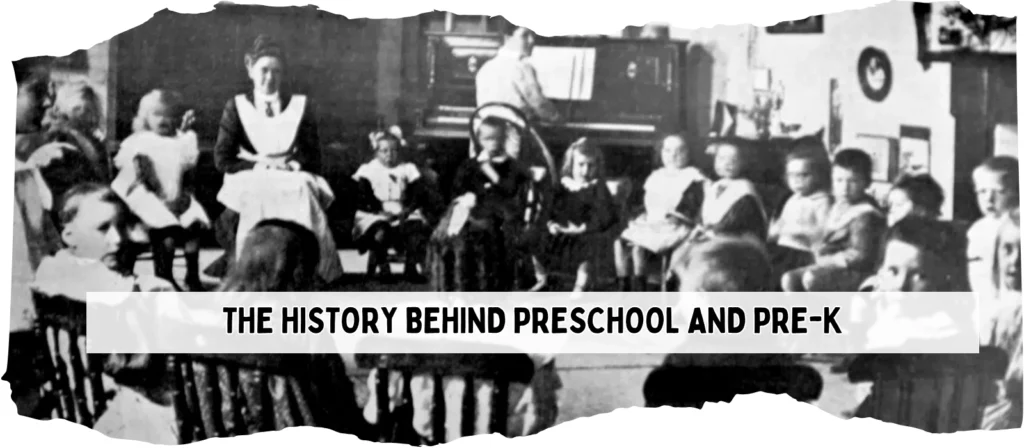
🔹 Origins of Preschool Education
The concept of preschool can be traced back to the 19th century, when Friedrich Froebel developed the idea of the “kindergarten” in Germany. His focus was on play, exploration, and the belief that children learn best through hands-on interaction with the world. This philosophy gave rise to preschool as a place for young children to begin learning through structured yet playful activities before entering formal schooling.
The Montessori movement in Italy also significantly shaped the preschool model. Maria Montessori introduced a system based on child autonomy, individualized instruction, and the prepared environment. Her approach still influences many modern preschools and contributes to the ongoing relevance of the preschool vs pre k distinction.
🔹 The Emergence of Pre-K Programs
Pre-K programs developed later, largely in response to the growing recognition of the achievement gap and the role early education can play in reducing it. In the United States, the Head Start program launched in 1965 was a major catalyst. It was designed to provide comprehensive early education to children from low-income families, promoting readiness for school both academically and socially.
Unlike preschool, which was often private and varied in format, pre-K programs increasingly became public, standardized, and outcome-driven. They were built with clear educational goals in mind, aimed at ensuring that all children—regardless of background—could enter kindergarten on an equal footing. Thus, the contrast between preschool vs pre k widened, with pre-K leaning more toward structure and accountability.
🔹 Philosophical Differences and Practical Impacts
The philosophical roots of preschool emphasize developmental readiness, creativity, and emotional growth. Pre-K, however, is grounded in educational policy and academic benchmarking. This divergence means that even today, preschool vs pre k choices reflect different values—some families prioritize creativity and social development, others value academic preparedness.
Educators and policymakers continue to debate the balance between these two models. Should early childhood education be primarily about play and discovery, or should it focus on school preparation? The preschool vs pre k conversation is a reflection of this ongoing tension—and both models remain important depending on the needs of the child and the goals of the family or institution.
What’s Right for Your Child? A Practical Comparison Table
After reading about the structure, focus, and educational philosophy of both preschool and pre-K, it’s clear that choosing between preschool vs pre k depends on various individual factors. Parents, school directors, and early childhood investors all benefit from seeing the distinctions side-by-side. Below is a practical summary comparing the key areas of difference between preschool vs pre k to support your decision-making.
🔹 Comparison Table: Preschool vs Pre K
| Feature | Preschool | Pre-K |
|---|---|---|
| Typical Age Range | 2.5 to 4 years old | 4 to 5 years old |
| Learning Approach | Play-based, child-directed | Academically structured, teacher-directed |
| Core Focus | Social skills, emotional development | Literacy, numeracy, school readiness |
| Teacher Qualifications | Varies (CDA, ECE certification) | Often Bachelor’s in Early Childhood Education |
| Class Schedule | Half-day or flexible | Full-day with fixed routines |
| Type of Institution | Private, faith-based, daycare settings | Public schools, state-funded institutions |
| Curriculum Standardization | Less standardized | Aligned with state education standards |
| Evaluation Methods | Informal observation | Formal assessments and readiness benchmarks |
| Parent Expectations | Early social exposure, fun learning | Readiness for kindergarten academics and behavior |
| Typical Outcome | Transition to pre-K or basic school structure | Stronger preparation for kindergarten expectations |
🔹 Final Tips for Choosing Between Preschool vs Pre K
- If your child is still developing confidence in group settings, preschool may offer the gentler transition.
- If your child is closer to school age and demonstrating curiosity in reading, writing, or counting, pre-K may better support that growth.
- If you value structure and want your child evaluated for kindergarten readiness, pre-K is likely the more appropriate choice.
- If flexibility and creative exploration are higher priorities, preschool provides a more open-ended environment.
Remember: preschool vs pre k is not a battle—it’s a balance. Each has a unique and meaningful role in early childhood development. What matters most is choosing the environment where your child will feel supported, engaged, and prepared for their next step in life.
Parents’ Most Asked Questions About Preschool vs Pre-K
When parents begin researching preschool vs pre k, they often have dozens of questions. Many of these revolve around age, cost, curriculum, and developmental goals. Below are some of the most frequently asked questions (FAQs) designed to address common concerns about preschool vs pre k and help clarify the differences.
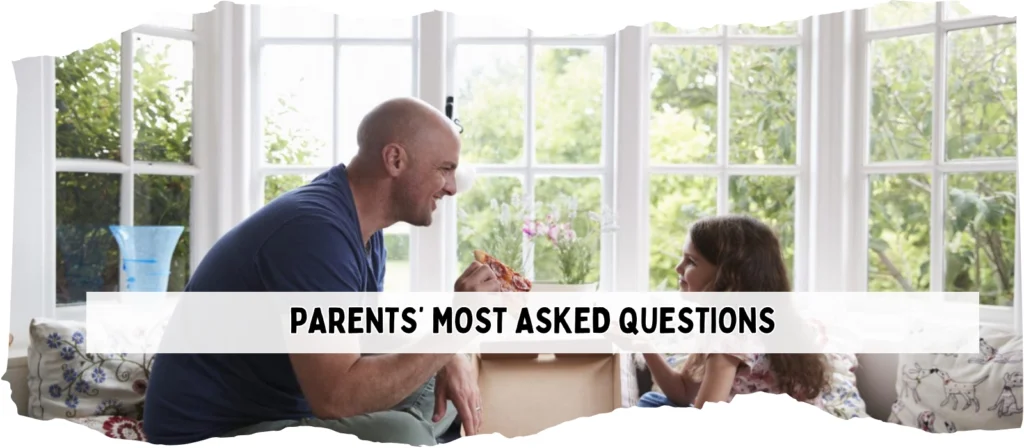
🔹 Is preschool the same as pre-K?
No. Preschool and pre-K serve different age groups and learning objectives. Preschool typically welcomes children aged 2.5 to 4 years, with a focus on play and social development. Pre-K is for children closer to 4–5 years old and emphasizes school readiness, including early literacy and math.
🔹 What is the difference between preschool and pre K?
The main difference between preschool vs pre k lies in structure and purpose. Preschool is less academic, more flexible, and suited for younger learners. Pre-K is structured to mimic kindergarten and prepare children for academic success through a set curriculum.
🔹 Is pre-K mandatory before kindergarten?
In most places, pre-K is not mandatory, but it is highly recommended. Many schools assume children entering kindergarten have had some form of structured pre-K experience, making the transition easier and more effective.
🔹 Can my child skip preschool and go straight to pre-K?
Yes, depending on the child’s age and development. Some children benefit from jumping into pre-K if they show early signs of readiness. However, others may need the foundational growth that preschool offers before entering the more structured pre-K environment.
🔹 Is pre-K the same as kindergarten?
No. Kindergarten is typically the first official grade in elementary school. Pre-K is a preparatory year that helps children adjust to academic routines, expectations, and behaviors they will encounter in kindergarten.
🔹 How do I know if my child is ready for pre-K?
Readiness indicators include the ability to follow instructions, participate in group activities, recognize letters and numbers, and show independence in self-care tasks. If your child meets several of these, they may thrive in pre-K.
🔹 Is there a difference between pre-K and preschool in curriculum?
Absolutely. Preschool programs often use theme-based or Montessori-style curricula focused on exploration and social learning. Pre-K uses more academic and skill-based curricula aligned with kindergarten standards.
🔹 Can preschool and pre-K be in the same facility?
Yes. Many centers offer both preschool and pre-K programs under one roof, adjusting curriculum and classroom expectations based on age and developmental milestones.
These FAQs reinforce the core idea that preschool vs pre k is a nuanced decision. The more you understand about your child’s readiness, your educational goals, and the structure of each program, the more confident your choice will be.
How XIHA Furniture Supports Pre-K Learning Environments
Pre-K classrooms demand more than just desks and chairs—they require an environment that supports exploration, creativity, and structured learning. At XIHA Furniture, we design and manufacture classroom furniture specifically for children aged 4 to 5. From ergonomic seating and adjustable-height tables to flexible learning zones and themed reading corners, our products encourage movement, social interaction, and independence.
Every item is rigorously tested for safety and durability, with available certification reports to support buyer confidence. We understand that timing is critical—especially when preparing a classroom before the school year begins. That’s why our production and shipping workflows are optimized for international education buyers like Mark, ensuring furniture arrives on time, every time.
Conclusion
Preschool vs pre k is more than a matter of terminology—it represents two different approaches to early learning, each with its own strengths. Preschool lays the groundwork for social and emotional development, while pre-K offers the structure and focus necessary to prepare children for kindergarten. Understanding these differences allows educators and parents to make informed, confident choices.
At XIHA Furniture, we are proud to support both preschool and pre-K classrooms with high-quality, child-centered furniture that enhances the learning experience. Whether you’re planning a new school or upgrading your space, we’re here to help you create the right environment for every stage of early education.



